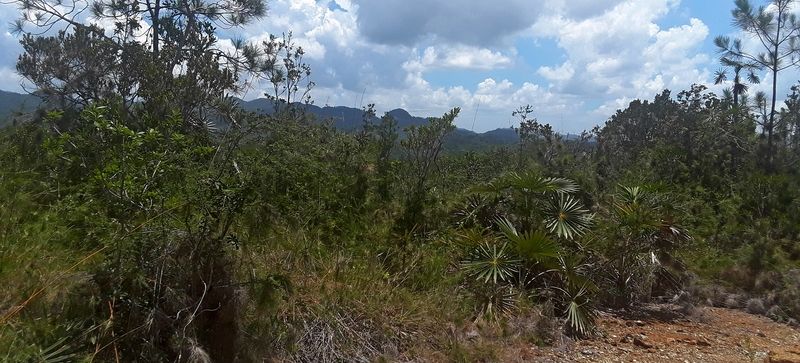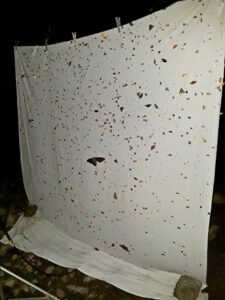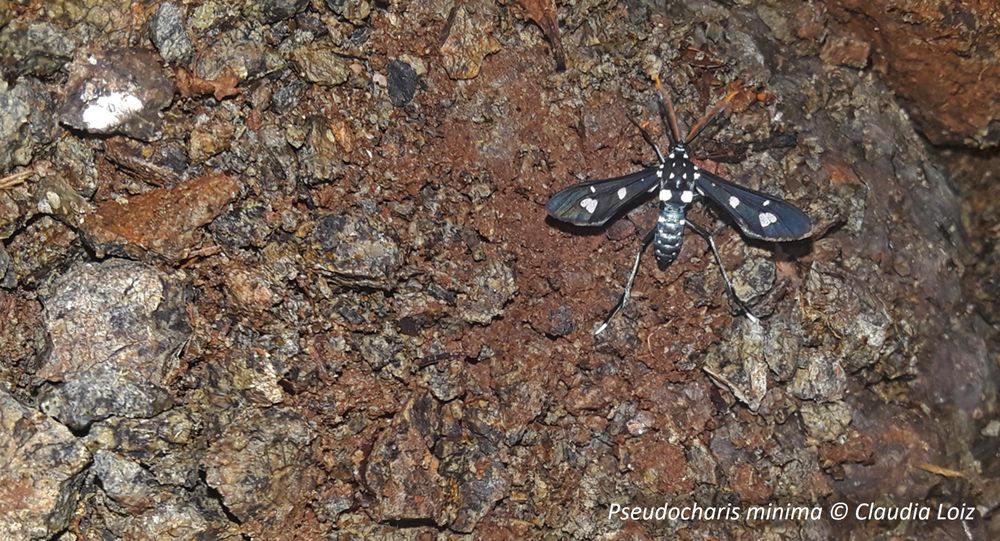Little known to the general public and rarely studied, ecosystems associated with serpentine soils harbour a unique biodiversity, both in terms of flora and fauna. A recent study examined the importance of these particular ecosystems for insect conservation in Cuba.
Much like butterflies, their daytime counterparts, moths have a strong connection to plant biodiversity. Environments with unique vegetation, such as serpentine soils, are likely to host moth species of conservation interest. These soils originate from ultramafic rocks, which are rich in toxic metals. The plants that grow in these soils had to adapt to extreme conditions, making the flora rich in endemic species—those found nowhere else. In Cuba, although serpentine soils cover only 7% of the island’s surface, they support nearly a quarter of its endemic plant species, highlighting the importance of these ecosystems for biodiversity.

Vegetation growing on serpentine soils © Claudia Loiz
Given the high number of endemic plants and the critical role plant biodiversity plays for Lepidoptera, serpentine ecosystems likely play a key role in conserving these insects. Claudia Loiz, a young Cuban researcher supported by the Caribaea Initiative, and her colleagues set out to confirm this by conducting the first survey of moth assemblages in these environments in Cuba.
Studying moths without disrupting their populations

Light traps are used to attract moths © Claudia Loiz
The study focused on the Arctiinae group, a subfamily of moths, of which 101 species are known in Cuba, over half of them being endemic.
Simple light traps, consisting of a powerful lamp aimed at a large vertical white sheet, were set up at various locations across two different serpentine sites on the island. Moths attracted to the light were identified and counted on the spot without being captured. Additionally, a plant survey was conducted at each sampling point to better understand the interactions between plant and moth diversity.
Results confirm the importance of the ecosystem
Over the course of the study, the team identified 1,369 moths belonging to 33 different species. In addition to this impressive number, their findings revealed that over a quarter of the identified species are endemic to Cuba, emphasizing the significance of these specific habitats.
As for the vegetation, 78 plant species were recorded across the two sites, with nearly half of them being endemic. The two sites had very distinct characteristics. As expected, the older and larger site was also the richest in vegetation, with 74 different plants recorded, compared to 45 for the second site. The team confirmed that moth diversity was higher in the older and larger area, illustrating the direct connection between plant richness and moth diversity.

Some of the species recorded: Phoenicoprocta capistrata, Pareuchaetes insulata, Eunomia insularis and Correbidia terminalis © Claudia Loiz
A conservation challenge
This study provides new insights into Arctiinae moth assemblages in Cuba. In particular, it highlighted a smaller number of individuals for endemic species, showing a tendency for these species to be rarer than non-endemic ones.
More importantly, the study shows that although serpentine soils cover only a small portion of Cuban territory, they support significant biodiversity, both in terms of flora and fauna, with many species and a high level of endemism. These ecosystems are therefore of special interest for conservation efforts and deserve greater attention from the scientific community.
About the author
Claudia Loiz, a native of Cuba, is currently pursuing a PhD on the diversity of butterflies’ assemblages in Havana, supported by Caribaea Initiative. The data presented in the present article come from her bachelor and master’s research, which focused on the diversity of Arctiinae moths in Cuba, the latter also supported by Caribaea Initiative.
Reference
Loiz, C., Perrot-Minnot, M.-J. & Barro, A. (2024). Diversity and endemism of Arctiinae moth assemblages in serpentine dry lowlands in Cuba. Journal of Insect Conservation, https://doi.org/10.1007/s10841-024-00632-w.

